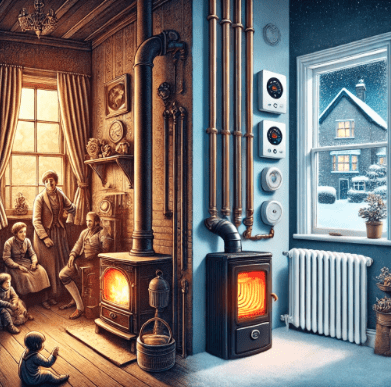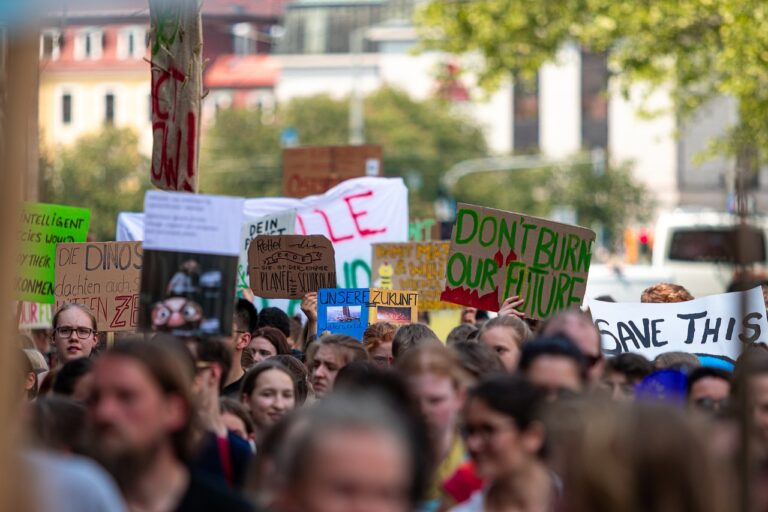
Boilers are now an essential part of UK homes, providing efficient heating and hot water. However, the history of how British homes stayed warm during the cold winters reveals a fascinating evolution of heating technology, from primitive methods to the sophisticated systems we rely on today.
1. Early Heating Methods Before Boilers
Before boilers became common, British households relied on simpler, less efficient methods to stay warm during the winter months:
a. Open Fires
The earliest form of home heating was the open hearth fire, typically fueled by wood or coal. These fireplaces were central to homes, providing warmth and a place for cooking. However, open fires were inefficient, as most of the heat escaped through the chimney, leaving rooms only partially warmed.
b. Cast Iron Stoves
By the 18th and 19th centuries, cast iron stoves became popular in wealthier homes. These stoves improved heating efficiency by retaining and radiating heat better than open fires. They were also used for cooking and warming water for bathing.
c. Hot Water Bottles and Heavy Bedding
For personal warmth, families relied on hot water bottles, typically made of stoneware or metal, and layered themselves with heavy bedding such as wool or feather-filled duvets.
d. Communal Living
In rural areas and among the working class, families often lived in smaller spaces to retain heat. Communal fires or shared living areas were common to conserve warmth.
2. The Introduction of Boilers to UK Homes
a. The Industrial Revolution and Early Boilers
The industrial revolution in the 18th and 19th centuries marked the beginning of steam boilers. Initially, boilers were large, industrial devices used in factories to power machinery and generate heat. Over time, smaller versions were developed for domestic use, primarily to heat water.
b. The 19th Century: The Birth of Domestic Boilers
In the late 19th century, the first domestic heating boilers appeared in wealthier households. These were primarily coal-fired boilers that heated water for radiators and bathing. They marked a shift from relying solely on fireplaces for home heating.
c. The 20th Century: The Rise of Gas Boilers
- 1920s-1930s: The introduction of gas-fired boilers began in urban areas where gas supply networks were established. These boilers were more convenient and cleaner than coal-fired systems.
- Post-World War II Boom (1950s-1960s): After World War II, central heating systems became a hallmark of modern homes. The government supported widespread adoption of central heating to improve living standards. Boilers were paired with radiators to distribute heat evenly throughout homes.
d. Modern Boilers
- 1980s-1990s: The invention of condensing boilers, which reuse heat from exhaust gases, greatly improved efficiency.
- 2000s-Present: Modern combi boilers (combination boilers) that provide heating and hot water on demand became the most popular choice in the UK. These boilers are compact, energy-efficient, and user-friendly.
3. What Did British Homes Do Before Central Heating?
Before boilers and central heating systems, keeping warm required effort and ingenuity:
a. Heating Specific Rooms
Families often heated only one or two rooms where they spent most of their time. Bedrooms and other less-used areas were left cold, and people dressed warmly to stay comfortable.
b. Heavy Curtains and Insulation
Homes were built with thick walls, and heavy curtains were used to block drafts. While insulation as we know it didn’t exist, homes were designed to retain as much heat as possible.
c. Manual Labour for Heating
Household members regularly tended to fireplaces, stoves, or boilers to keep them fueled and functioning. Tasks included chopping wood, hauling coal, and cleaning chimneys.
4. The Benefits of Modern Boilers
Today’s boilers have transformed home heating, offering unparalleled convenience and efficiency compared to historical methods:
- Energy Efficiency: Modern condensing boilers extract more heat from fuel, reducing waste.
- Comfort: Central heating systems distribute warmth evenly across multiple rooms.
- On-Demand Hot Water: Combi boilers provide instant hot water for bathing, cooking, and cleaning.
- Ease of Use: Thermostats and smart controls make it easy to maintain a comfortable temperature.
5. The Future of Boilers in the UK
As the UK transitions toward greener energy solutions, the government is phasing out gas boilers by 2035 to meet climate goals. Alternatives such as heat pumps, hydrogen boilers, and district heating systems are being promoted to replace traditional boilers.
From open fires and cast iron stoves to modern, energy-efficient boilers, the evolution of home heating in the UK reflects technological progress and changing lifestyles. While today’s boilers offer unparalleled comfort and convenience, they are just one step in the ongoing journey to greener, more sustainable heating solutions.
Our Whatsapp broadcast List (English): https://livinintheuk.com/broadcast_en






